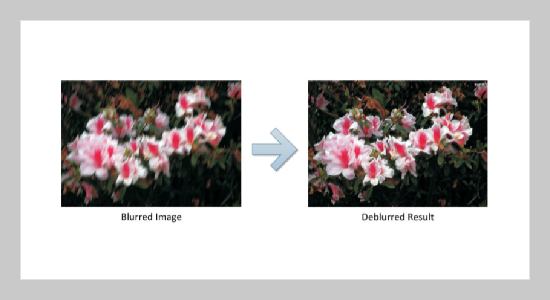Jiunn-Lin Wu This email address is being protected from spambots. You need JavaScript enabled to view it.1, Chia-Feng Chang1 and Chun-Shih Chen1 1Department of Computer Science and Engineering, National Chung Hsing University, Taichung, Taiwan 402, R.O.C.
Received:
February 27, 2013
Accepted:
June 28, 2013
Publication Date:
September 1, 2013
Download Citation:
||https://doi.org/10.6180/jase.2013.16.3.06
Motion Blur is one of the common artifacts in digital photographing. With the population of handheld camera and smart phone, image deblurring becomes an important problem. RichardsonLucy algorithm is well-known deconvolution algorithm. But the ringing artifacts usually appear while the estimated point spread function is not accurate. In this paper, we proposed an improved Richardson-Lucy deconvolution algorithm. Before deconvolution step, we separate the blurred image into smooth part and edge part which is called the edge map. The blurred image and edge map are then used for image deblurring. By using the proposed edge map, the ringing artifacts in the deblurred image are significantly reduced while preserving the sharp edge information.ABSTRACT
Keywords:
Motion Blur, Deconvolution, Richardson-Lucy, Ringing Artifacts, Edge Map
REFERENCES
















